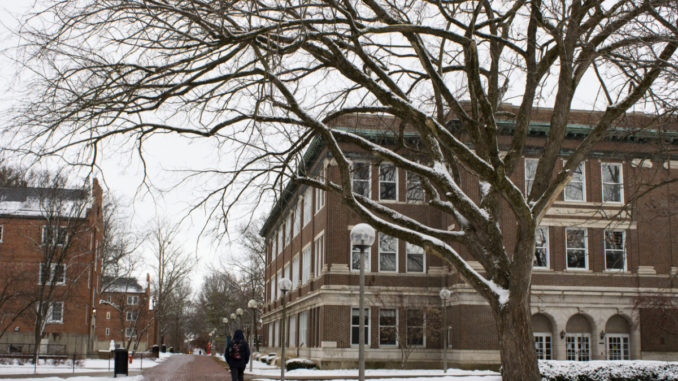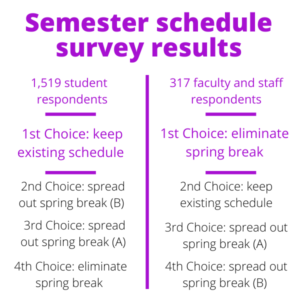
The decision to keep spring break in the 2021 spring schedule was made with consideration for the risk of spreading infection and the toll 14 weeks without a break has on students.
The Executive Leadership Team, composed of the president, vice presidents and chief information officer, decided to keep the schedule that was already in place before the pandemic started. Despite the risks in having students leave for a week-long spring break, such as contracting COVID-19 and bringing it back to campus, The Executive Leadership Team also considered the impact on students if they were to eliminate spring break.
“As the [fall] semester wore on, we discovered that it really took a toll on our students, faculty and staff,” Janna Stoskopf, vice president for student affairs, said.
Stoskopf said the administration noticed that students were tired last semester and knew this semester had to be different. Administration was informed by members of faculty that they perceived the students to be under more stress than in previous semesters.
Stoskopf said the decision came down to trust. The University has asked students to observe healthy habits to prevent the spread of COVID-19, and administration has seen that students are taking this seriously.
“If we change up [the spring semester schedule], are we inadvertently sending a message that we’re still not sure if students can do it,” Stoskopf said. “By leaving the schedule as it was originally laid out we’re sending a message that [the students] have done what we asked them to do, and we trust that they will continue to engage in that same activity.”
The decision was also based on student feedback. There was a survey sent out to all students, faculty and staff in October to gauge opinions on various schedules. 1,519 students and 317 faculty and staff answered the survey. The majority of student respondents said they would prefer the schedule to include a spring break. Faculty and staff respondents ranked the option of eliminating spring break highest and the option of keeping the original schedule as second highest.
If the survey had come back with a different result, then the Executive Leadership Team would have probably gone with another option, Janet Gooch, executive vice president for academic affairs and provost, said.
“We decided with a number of considerations,” Gooch said. “Our COVID-19 numbers, our policies and procedures, the opinion of faculty, staff and students, recommendations of the CDC and how we thought the vaccine might roll out.”
Stoskopf said administration has confidence that if they give students advice on how to minimize risk for those around them during spring break, the students will listen. There will be a reminder sent to the students before spring break with recommended safe practices to follow. The message will most likely come from Brenda Higgins, associate vice president for student health and wellness, or from the Student Affairs Office.

